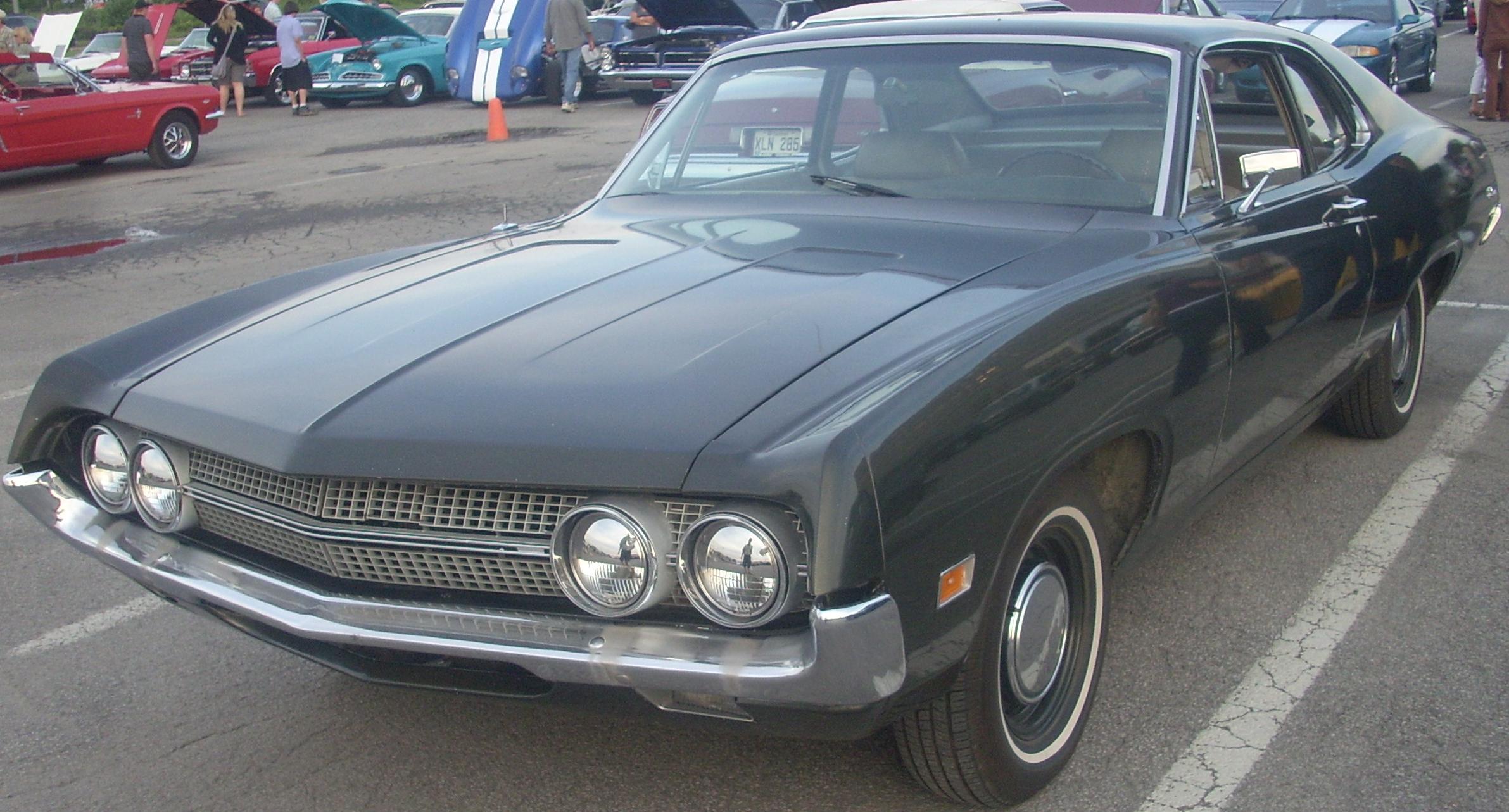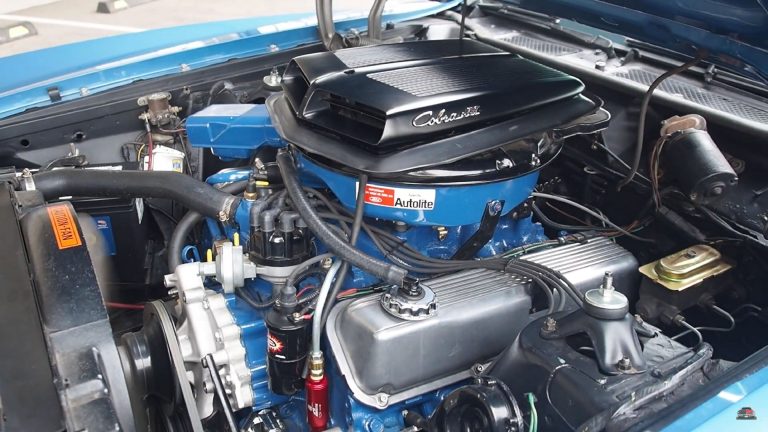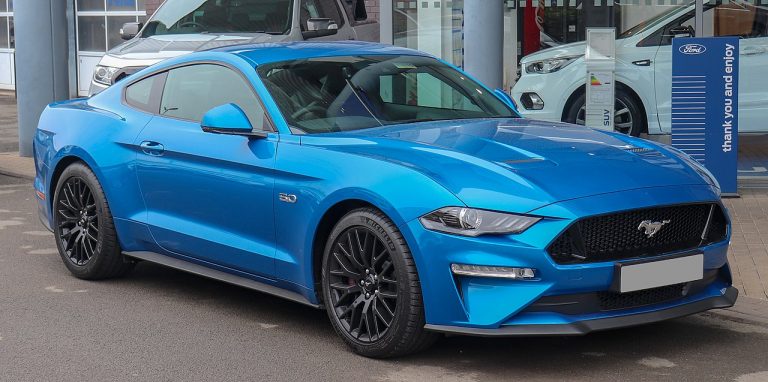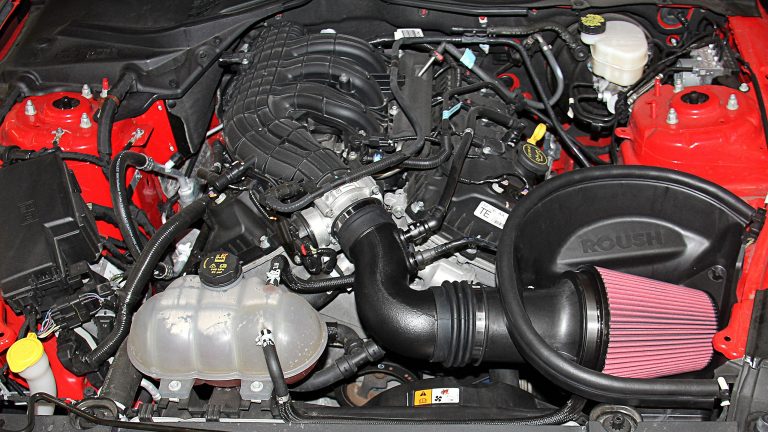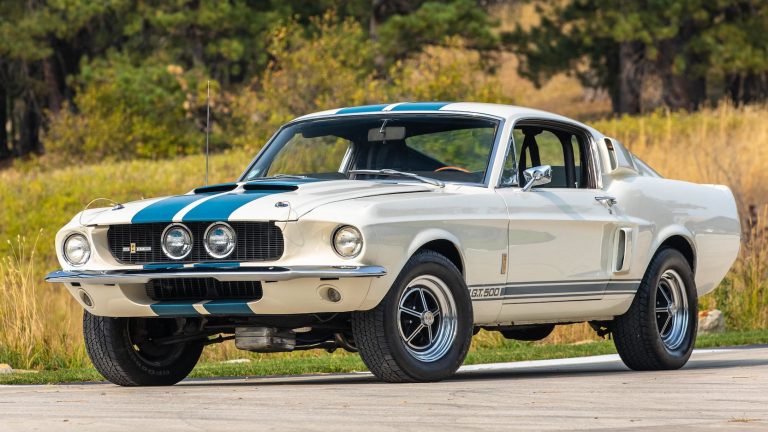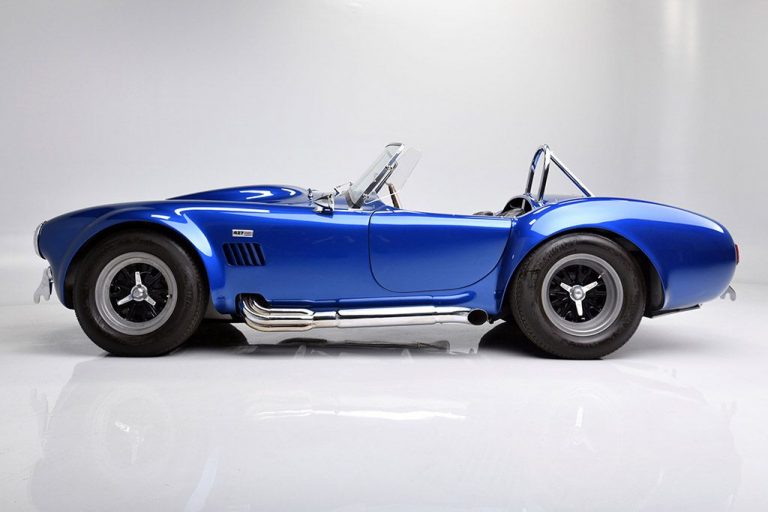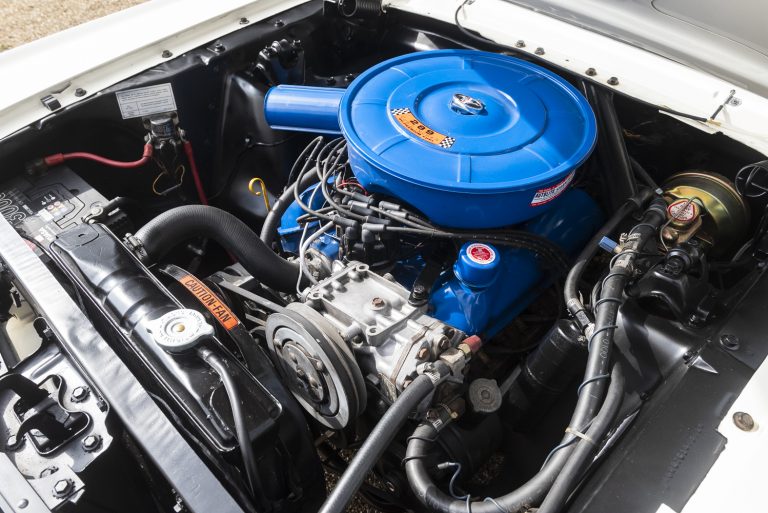Ford Falcon

Meet Chandler
Chandler has a bachelors and masters degree in history as well as a passion for classics and muscle cars. His education and historical knowledge makes him skilled at crafting highly detailed articles about America’s muscle cars and automotive history. His love of muscle cars is undeniable, with him seeking them out at every opportunity during his visits to auto shows and car meets. Chandler’s knowledge and enthusiasm towards automotive history make him a great asset to the Muscle Car Club community.
It may have been short lived, but the Ford Falcon was one of the top cars of the 1960s. Most people know it as the basis for the Ford Mustang, but it was a solid offering on its own. The Falcon started life as a compact and economy car, but by the late-1960s was verging on muscle car territory. The short lived 1970.5 Falcon on the intermediate Ford Fairlane/Torino chassis got power plants all the way up to the 429 Cobra Jet Ram Air V8, which produced 370 horsepower. It’s not quite as iconic as some of the other more legendary cars of the day, like the Plymouth Road Runner or Pontiac GTO, but enthusiasts still fondly remember the Falcon today as a formidable compact muscle car. Read on to learn all about the 1960–1970.5 Ford Falcon.
Ford Falcon Overview
The Ford Falcon spanned three generations from 1960–1970, and it sold well over 2.6 million units. Ford introduced the Falcon as a new compact for 1960, which they dubbed “The New-Size Ford.” It was available as a wagon, sedan, or coupe, but was severely lacking in the power department. In 1963, the line got its first V8, a 164 horsepower 260 cid small-block.
The second generation began in 1964, and the 1965 Ford Falcon got the two-barrel carb version of the 289 Challenger V8 used in the Mustang. It was good for 200 horsepower, and in 1967 it got the four-barrel version, making 225 horsepower. The third generation began in 1966, and the 1968 Ford Falcon used a double-barrel version of the 302 V8, making 220–230 horsepower.
This was the most powerful domestic compact Falcon ever built. Unfortunately, production stopped on it just a few months into the 1970 model year. In its place, halfway through 1970, they brought out the intermediate sized version based on the Fairlane/Torino chassis. This version got the all-powerful 429 Cobra Jet Ram Air V8, producing a maximum of 370 horsepower.
Unfortunately, the new intermediate Falcon was short-lived, and did not survive to make it to 1971. Instead, the Pinto and Torino took over in its place. As of 2024, Ford has still not revived the Falcon namesake. Still, we can only hope they decide to stick a 450+ horsepower 5.0 Coyote V8 underneath the hood and try again.
First Generation 1960–1963 Ford Falcon
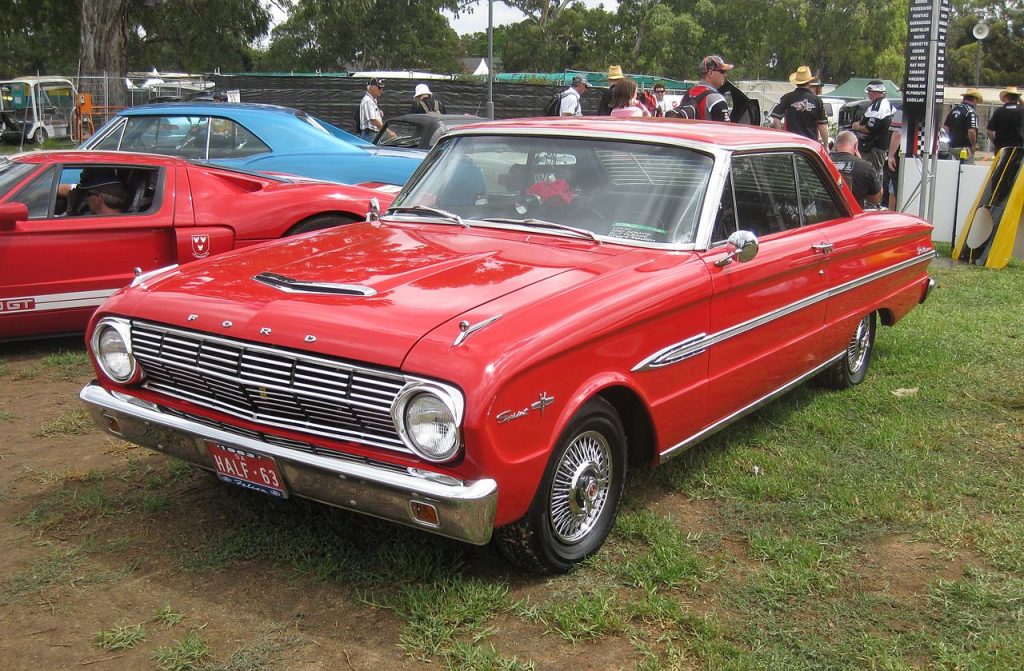
The first generation of the Ford Falcon kicked off in 1960 and lasted four model years through 1963. Ford introduced it originally as “The New Size Ford,” which was essentially just a term that meant compact. It rode a 109.5 wheelbase, which compared with the Thunderbird and Galaxie was 9.5 inches shorter, and it was more than 20 inches smaller from end-to-end.
Styling-wise, it was somewhat bland and conservative, with a slab-sided body, single headlights and taillights, power-bule simulated scoop hood, chrome bumpers, unibody construction, and Ford branding on the hood and rear end. Ford made it available as either a two or four-door sedan or station wagon. They called the two-doors “Tudors,” while the four-doors were “Fordors”
From 1960–1961, buyers could order the Deluxe package, which became its own line under the Falcon in 1962. In 1961, they made the Futura model available. It was essentially a standard Falcon but with bucket seats up front and a center console. For 1963, the Futura became its own model, and it replaced the Deluxe as the top-tier option, and a convertible became available.
Also in 1963, Ford introduced the Futura Sprint, which was the first true performance version. Prior to the Sprint, the only available engines were either a “Falcon Six” 144 cid inline-six at 85-90 horsepower, or a 170 cid inline-six at 101 horsepower. With the Sprint, Ford used the 260 “Challenger” V8. It had 8.7:1 compression, a Holley double-barrel carburetor, and pumped out 164 horsepower. It was a good start, but soon the Falcon would turn into a real muscle car.
First Generation 1960–1963 Ford Falcon Engines
| Model Year | Engine | Horsepower | Torque |
| 1960 | 144 I6 (1bbl) | 90 horsepower | 138 lb-ft |
| 1961-1963 | 144 I6 (1bbl) | 85 horsepower | 138 lb-ft |
| 1962-1963 | 170 I6 (1bbl) | 101 horsepower | 156 lb-ft |
| 1963 | 260 V8 (2bbl) | 164 horsepower | 258 lb-ft |
First Generation 1960–1963 Ford Falcon Production Numbers
| Model Year | Body Style | Production Total |
| 1960 | Four-Door Sedan | 167,896 |
| Two-Door Sedan | 193,470 | |
| Four-Door Station Wagon | 46,758 | |
| Two-Door Station Wagon | 27,552 | |
| 1960 Total | 435,676 | |
| 1961 | Four-Door Sedan | 159,761 |
| Two-Door Sedan | 149,982 | |
| Two-Door Futura | 44,470 | |
| Four-Door Station Wagon | 87,933 | |
| Two-Door Station Wagon | 32,045 | |
| 1961 Total | 474,191 | |
| 1962 | Four-Door Sedan | 126,041 |
| Two-Door Sedan | 143,650 | |
| Two-Door Futura | 17,011 | |
| Four-Door Station Wagon | 66,819 | |
| Two-Door Station Wagon | 20,025 | |
| Four-Door Squire Wagon | 22,583 | |
| 1962 Total | 396,129 | |
| 1963 | Four-Door Sedan | 62,365 |
| Two-Door Sedan | 70,630 | |
| Futura Four-Door Sedan | 31,736 | |
| Futura Two-Door Sedan (6) | 16,674 | |
| Futura Two-Door Sedan (5) | 10,344 | |
| Futura Two-Door Hardtop | 17,524 | |
| Futura Two-Door Sport Hardtop | 10,972 | |
| Futura Two-Door Convertible | 18,942 | |
| Futura Two-Door Sport Convertible | 12,250 | |
| Futura Two-Door Sprint Hardtop | 10,479 | |
| Futura Two-Door Sprint Convertible | 4,602 | |
| 1963 Total | 266,518 |
Second Generation 1964–1965 Ford Falcon
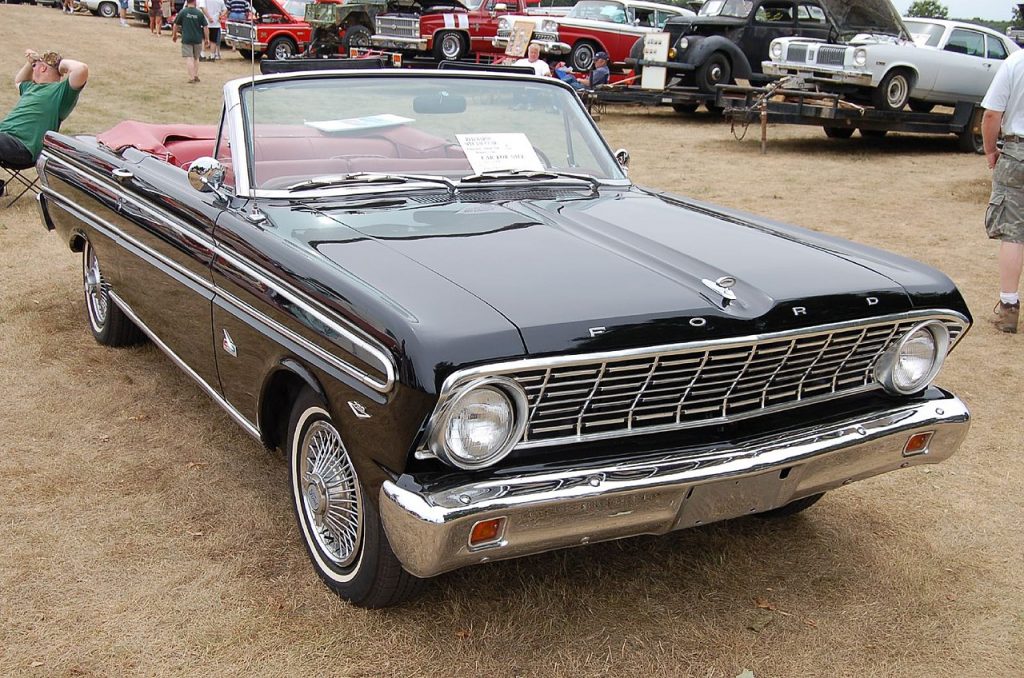
The Ford Falcon returned for a second generation from 1964–1965, and for the first time you could consider some models to be muscle cars. Both the Futura and Sprint lines continued to be the top-tier offerings, and now the V8 became a $153 option for all models. In addition, the Sprint line continued to only have V8 power as the only option. Production remained strong throughout the generation, and in 1965 the 289 Challenger V8 became available. A lucky few north of the border had the 271 horsepower K-code version, but the states only got 200 horsepower.
1964 Ford Falcon
Things started with the 1964 Ford Falcon, which got more aggressive styling from sculpted body sides, a new grille, and a convex feature line on the sides. Available engines were the 144 and 170 inline-sixes and 260 V8 from the year prior. Also, a new 200 inline-six was an option. The Sprint package was a $185 extra, and included bucket seats, wheel covers, a chrome engine dress up kit, sport steering wheel, tachometer, and a four-on-the-floor manual.
1965 Ford Falcon
For the 1965 Ford Falcon, the big news was the introduction of the 289 Challenger V8 engine. Using the same shell, Ford updated the grille and taillights, but for the most part it looked the same. The new 289 Challenger V8 produced 200 horsepower, utilizing a 9.3:1 compression ratio and Holley double-barrel carburetor.
For the Canadian market only, Ford of Canada made the Hi-Po K-Code version of the 289 Challenger an option. This was the same engine as inside the Ford Mustang, and used a stronger block, beefier internals, higher 10.5:1 compression ratio, a 600-cfm Autolite quad-barrel carburetor, and solid-lifter camshaft. It produced a maximum of 271 horsepower and 312 lb-ft of torque.
Second Generation 1964–1965 Ford Falcon Engines
| Model Year | Engine | Horsepower | Torque |
| 1964 | 144 I6 (1bbl) | 85 horsepower | 134 lb-ft |
| 1964 | 170 I6 (1bbl) | 101 horsepower | 156 lb-ft |
| 1964 | 200 I6 (1bbl) | 116 horsepower | 175 lb-ft |
| 1964 | 260 V8 (2bbl) | 164 horsepower | 258 lb-ft |
| 1965 | 170 I6 (1bbl) | 105 horsepower | 158 lb-ft |
| 1965 | 200 I6 (1bbl) | 120 horsepower | 190 lb-ft |
| 1965 | 289 V8 (2bbl) | 200 horsepower | 282 lb-ft |
| 1965 | 289 V8 (4bbl) (Canada Only) | 271 horsepower | 312 lb-ft |
Second Generation 1964–1965 Ford Falcon Production Numbers
| Model Year | Body Style | Production Total |
| 1964 | Standard Falcon | 119,106 |
| Futura/Sprint | 130,103 | |
| Station Wagon | 51,276 | |
| 1964 Total | 300,488 | |
| 1965 | Standard Falcon | 66,044 |
| Futura/Sprint | 174,548 | |
| Station Wagon | 39,053 | |
| 1965 Total | 279,645 |
1966–1970.5 Ford Falcon
The Falcon returned for a third and final generation from 1966–1970, and things continued pretty much the same as before. The Falcon got restyled for 1966 like the rest of the line, and the Futura lasted alongside it through 1969. Ford offered it for the first part of 1970, selling mainly old 1969 models. However, when they released the Maverick partway through the year, Falcon sales completely dropped and it got pulled from the lineup.
Yet, that wasn’t quite the end, as Ford brought back a larger intermediate size version based on the Fairlane/Torino chassis. To some enthusiasts, this version is the only true muscle car. In contrast to the economy compacts, the intermediate Falcon got all of Ford’s high-performance engines for the year. This included the behemoth 429 Cobra Jet Ram Air, which made 370 horsepower and 450 lb-ft of torque.
Unfortunately, they did not bring back the intermediate version for 1971, and the namesake has not been revived since. They replaced the compact Falcon with the Maverick and Pinto, and the intermediate version disappeared like it never even existed.
1966 Ford Falcon
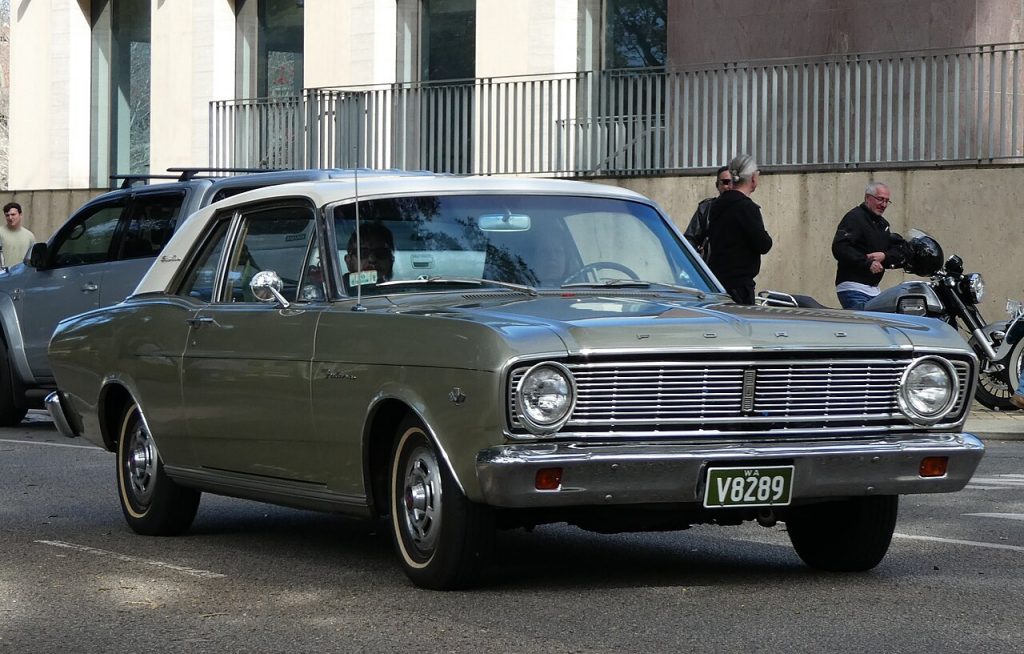
The entire lineup got restyled for 1966, including the Falcon. The new model got a longer hood, more rounded sides, and a smaller trunk. The Futura continued as the top line, and the Sprint was no longer an option. Luckily, that didn’t mean the disappearance of the V8, as Ford continued to use the 200 horsepower C-Code 289 Challenger V8.
1967 Ford Falcon
The only significant change for the 1967 Ford Falcon is the slightly better version of the base 289 V8. The A-Code 289 made 225 horsepower through 10.0:1 compression and a Holley quad-barrel carburetor. Despite the more powerful engine, however, sales declined considerably, and 1967 was the worst year for sales ever.
1968 Ford Falcon
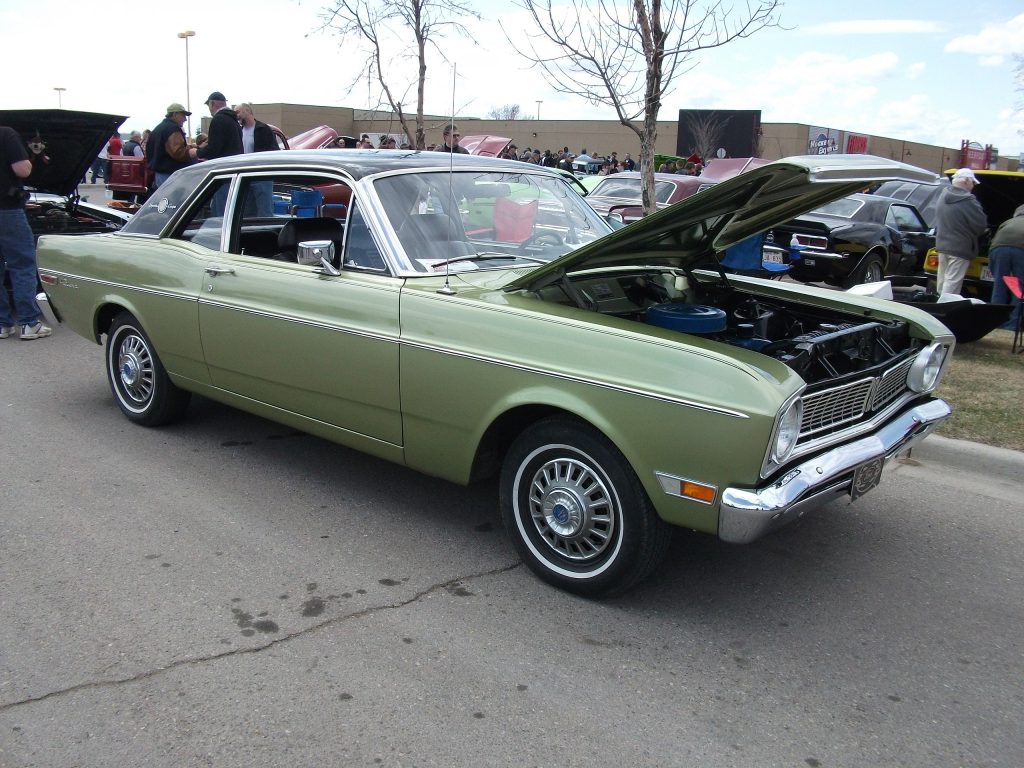
The 1968 Ford Falcon used square taillights and a new grille, but it still had the same body. Power on the 289 Challenger V8 dropped to 195 horsepower, and only the C-code version was available. However, Ford did add the new 302 V8 to the lineup. The 302 V8 made 230 horsepower with a 10.0:1 compression ratio and Motorcraft quad-barrel carburetor.
1969 Ford Falcon
The 1969 Ford Falcon was the last to go through a full-year of production, and sales were down considerably from their peak at the beginning of the decade. Both the 289 Challenger V8 and the four-barrel 302 V8 were gone, and a Motorcraft double-barrel version of the 302 making 220 horsepower with 9.5:1 compression was the top power plant.
1970 Ford Falcon
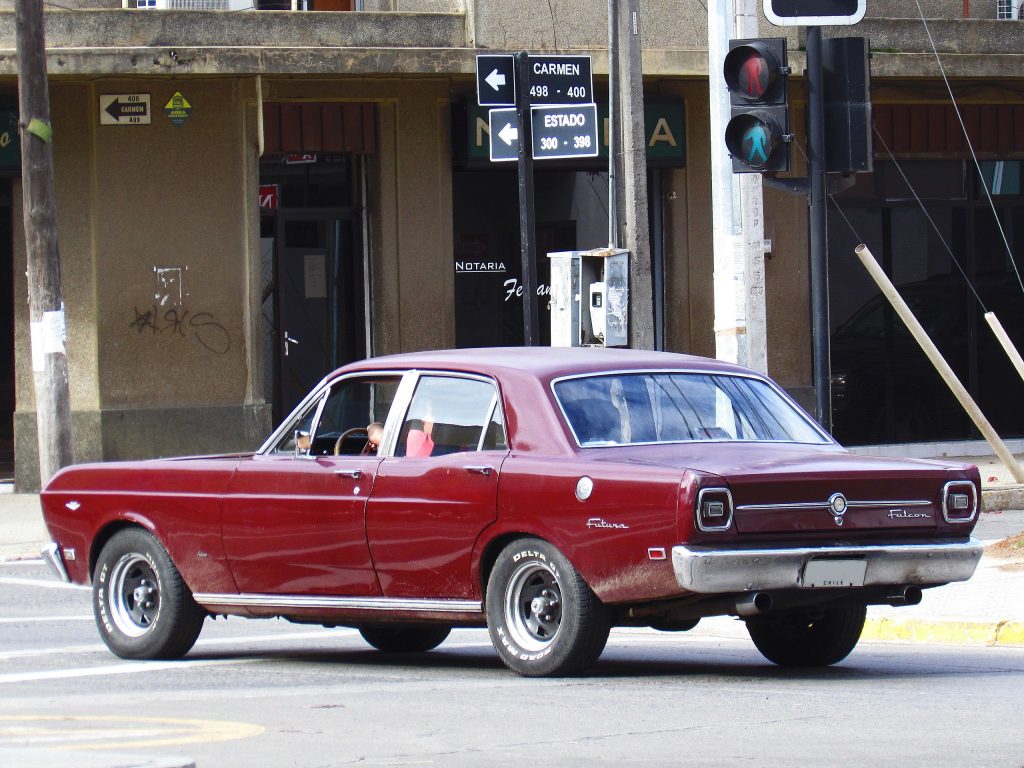
The 1970 model was the last year for the compact Ford Falcon, and it was the same as the year prior. The introduction of the Maverick killed sales, and Ford dropped it from the lineup just a few months into the new year.
1970.5 Ford Falcon intermediate
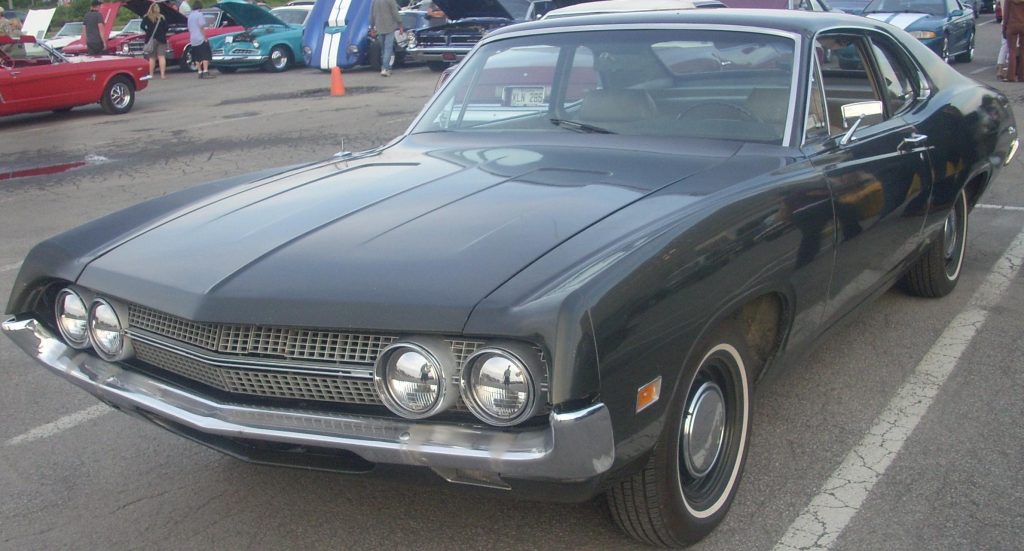
After discontinuing the compact Ford Falcon, they brought out the intermediate Falcon based on the Fairlane/Torino for the second half of the year. Most people refer to it as the 1970.5 Falcon to distinguish it from the compact version. The Futura line was not available, and it was now the lowest priced option among Fairlanes/Torinos. Available body styles were a four-door sedan or wagon and a two-door sedan.
However, the Falcon did have a plethora of optional engines, including the small-block 351 and big-block 429 Cobra Jet V8. The 429 Cobra Jet Ram Air produced 370 horsepower through an 11.3:1 compression ratio and Holley quad-barrel carb.
Sadly, Ford did not continue the intermediate version after 1970, though emissions were sure to curb its output had they continued it, anyways. Today, the Falcon is still warmly remembered by muscle car enthusiasts as a solid compact and budget-level muscle car that looked great and could be modified to perform incredibly.
1966–1970.5 Ford Falcon Engines
| Model Year | Engine | Horsepower | Torque |
| 1966-1967 | 170 I6 (1bbl) | 105 horsepower | 158 lb-ft |
| 1966-1967 | 200 I6 (1bbl) | 120 horsepower | 190 lb-ft |
| 1966-1967 | 289 V8 (2bbl) | 200 horsepower | 282 lb-ft |
| 1967 | 289 V8 (4bbl) | 225 horsepower | 305 lb-ft |
| 1968-1969 | 170 I6 (1bbl) | 100 horsepower | 156 lb-ft |
| 1968-1969 | 200 I6 (1bbl) | 115 horsepower | 190 lb-ft |
| 1968 | 289 V8 (2bbl) | 195 horsepower | 288 lb-ft |
| 1968 | 302 V8 (4bbl) | 230 horsepower | 310 lb-ft |
| 1969-1970.5 | 302 V8 (2bbl) | 220 horsepower | 300 lb-ft |
| 1970 | 200 I6 (1bbl) | 120 horsepower | 190 lb-ft |
| 1970.5 | 250 I6 (1bbl) | 155 horsepower | 240 lb-ft |
| 1970.5 | 351 V8 (2bbl) | 250 horsepower | 355 lb-ft |
| 1970.5 | 351 V8 (4bbl) | 300 horsepower | 380 lb-ft |
| 1970.5 | 429 V8 (4bbl) | 360 horsepower | 480 lb-ft |
| 1970.5 | 429 V8 (4bbl) (Cobra Jet) | 370 horsepower | 450 lb-ft |
| 1970.5 | 429 V8 (4bbl) (Cobra Jet Ram Air) | 370 horsepower | 450 lb-ft |
1966–1969 Ford Falcon Production Numbers
| Model Year | Bodystyle | Production Total |
|---|---|---|
| 1966 | Base | 92,770 |
| Futura | 89,899 | |
| 1966 Total | 182,669 | |
| 1967 | Base | 35,198 |
| Futura | 29,146 | |
| 1967 Total | 64,344 | |
| 1968 | Base | 81,185 |
| Futura | 50,204 | |
| 1968 Total | 131,389 | |
| 1969 | Base | 63,550 |
| Futura | 31,466 | |
| 1969 Total | 95,016 |
Ford Falcon FAQ
The Ford Falcon formed the chassis that the Mustang would later be based on. The two models look similar, but the Mustang sold much better and had higher performance engines.
The Ford Falcon can be described as more of a muscle car than a pony car, though it’s right on the border between the two. The 1970.5 intermediate Falcon is a muscle car, but the compact version can go either way.
For many enthusiasts, the 1970.5 Ford Falcon with the 429 Cobra Jet was the best Falcon ever made. It combined clean styling with tons of raw power, and is an iconic muscle car today.

